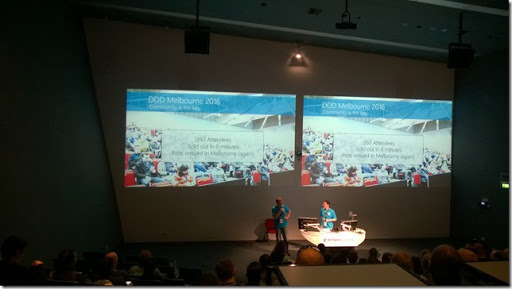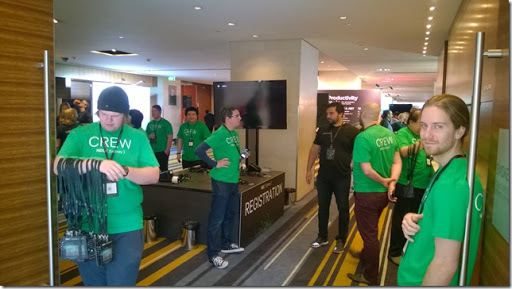-
DDD Melbourne 2016
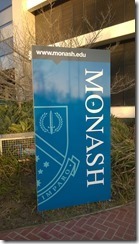 Last weekend I was privileged to be able to attend my second DDD Melbourne conference. I flew over Friday afternoon and had an uneventful transit from Melbourne airport to the motel, via the Skybus and a train connection. I stayed locally near Monash University’s Caufield campus, the venue for this year’s event.
Last weekend I was privileged to be able to attend my second DDD Melbourne conference. I flew over Friday afternoon and had an uneventful transit from Melbourne airport to the motel, via the Skybus and a train connection. I stayed locally near Monash University’s Caufield campus, the venue for this year’s event.Around 350 people were there. Monash was a great venue, with all lecture theatres having excellent AV facilities, so no problems watching presentations or hearing speakers. It was also really nice to catch up with a few familiar faces.
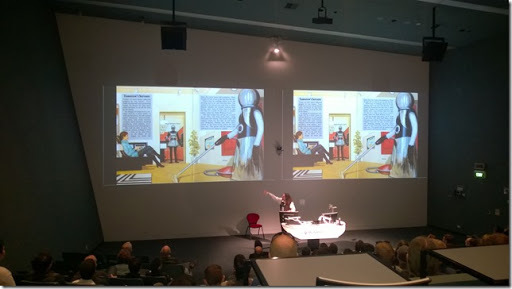 The day started with a thought-provoking keynote from Paul Fenwick, making us stop and think about what kind of future we’re creating. That slide with the strange robots – I had that book as a child! 😀
The day started with a thought-provoking keynote from Paul Fenwick, making us stop and think about what kind of future we’re creating. That slide with the strange robots – I had that book as a child! 😀

After that I caught the following sessions:
- Thinking in React with Mohammad Helmy
- Deploying Straight to Production: A Guide to the Holy Grail with Damian Brady
- The Actor/Model pattern in .NET: Akka.Net vs Orleans for the curious with William Tulloch
- Better APIs with GraphQL with Josh Price
After lunch I also got to present 10 tools and libraries to enhance .NET Unit Testing.
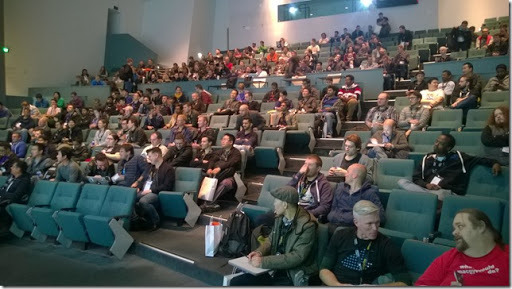 The final talk for the day was from Shawn Wildermuth. An inspiring and personal look into the life of a developer, and a great way to end the day.
The final talk for the day was from Shawn Wildermuth. An inspiring and personal look into the life of a developer, and a great way to end the day.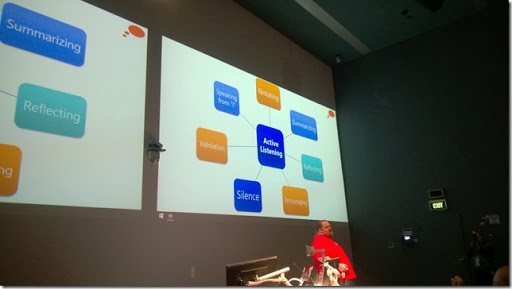 One key point Shawn made was how critical it is if you want to be a good developer, is to really work in your listening skills – not just “hearing” but actual ‘active listening’, because as it turns out, good communication skills are more important that good technical skills.
One key point Shawn made was how critical it is if you want to be a good developer, is to really work in your listening skills – not just “hearing” but actual ‘active listening’, because as it turns out, good communication skills are more important that good technical skills.And with that DDD Melbourne was over for another year. Off to the airport for the flight back home late Saturday night to be back at home with family and my own bed.
-
NDC Sydney 2016 Reflections
Now that I’m home again, it’s a good opportunity to think back over the last week. What were the highlights, lowlights of attending the first NDC conference held in the southern hemisphere?
Overall
WOW!. I had a great time, learned a lot, really enjoyed the sessions as well as meeting and chatting to lots of other developers. I’ll say it again.. WOW 😀
Depth of speakers
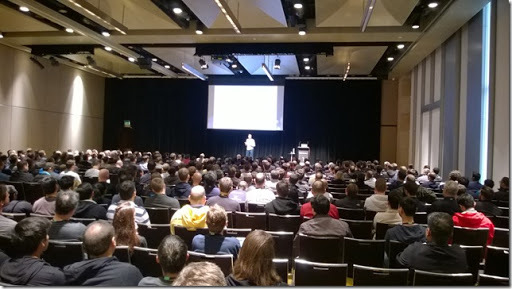 There were a lot of “big name” international speakers. I was going to name some, but that’s not really fair. Go have a look at the list.
There were a lot of “big name” international speakers. I was going to name some, but that’s not really fair. Go have a look at the list.That is definitely a plus. You don’t get many opportunities to see these people in Australia, let alone all in the one place. And not to mention the quality local talent.
A nice variety of presentations, and a chance to talk to all these people (and in my case asking “would you be interested in doing a Skype talk to our user group in Adelaide?”, to which the answer was almost always “yeah, sure I’d love to do that”.
The other nice thing is that even though you might regard some of them as having “celebrity” status in the software development (or even just the Microsoft software development) realm, the reality is that I didn’t find anyone who was so caught up in their own ‘fame’. They’re just regular people – they only have walk outside the conference to get a reality check if there was any doubt. No one walking past would have any clue who they were 😀
Venue
Sydney Hilton was excellent. Great rooms, helpful staff, yummy food. Full marks.
Weather
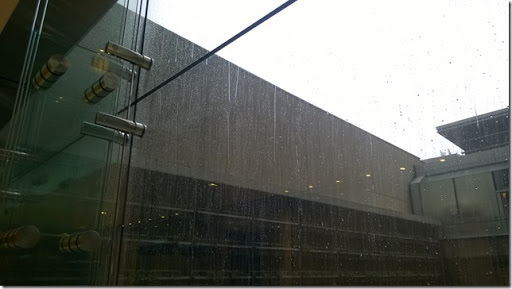 It was wet. I guess that’s the risk of holding a conference in early August – you’re going to catch a bit of Wintery weather sometimes. Not an issue for the conference itself, but maybe a little disappointing for foreign speakers who were hoping to do a bit of sight seeing during their visit.
It was wet. I guess that’s the risk of holding a conference in early August – you’re going to catch a bit of Wintery weather sometimes. Not an issue for the conference itself, but maybe a little disappointing for foreign speakers who were hoping to do a bit of sight seeing during their visit.Common trends and themes
There wasn’t a specific theme for the conference, but I did notice some topics that came up a few times in the presentations. In particular some that stood out to me were:
- Micro services
- F# and functional programming
- Don’t get hung up on chasing new stuff all the time
Volunteer crew
- Get rostered to look after a particular breakout room for half day blocks.
- Pass around a cordless microphone for attendees to ask questions (so questions get picked up in the session recordings)
- Count all the eval votes after each session and give the totals to Information Desk.
For doing this you get to attend the conference and participate in all the activities for free (and get a couple of bright green ‘CREW’ t-shirts).
 There weren’t enough volunteers (a few apparently failed to turn up), which meant extra shifts for the rest of us. Hopefully next time there are enough so that everyone gets a fair share of shifts and free sessions.
There weren’t enough volunteers (a few apparently failed to turn up), which meant extra shifts for the rest of us. Hopefully next time there are enough so that everyone gets a fair share of shifts and free sessions.Session recordings
In the next few weeks, expect to see all of the sessions uploaded to Vimeo at https://vimeo.com/ndcconferences
Next year
The dates have already been announced - 14-18th August, 2017. Mark your diary, talk to your boss, manager, colleagues, social secretary and/or spouse. This is THE developer event in Australia.
I hope to be there again next year, and I hope you will be too!
-
NDC Sydney–Day 3
Friday, the final day of NDC Sydney. I was rostered in Room 2 all day, so got to see these speakers/presentations:
Roslyn is @filip_woj’s middle name #ndcsydney pic.twitter.com/cUe4msM4Xr
— David Gardiner (@DavidRGardiner) August 4, 2016
Micro services with @rachelreese. Did she fly here with https://t.co/JycJa6pQXP :-) #ndcsydney pic.twitter.com/5Fk6Rribz4
— David Gardiner (@DavidRGardiner) August 5, 2016
Micro services are the next big thing @samnewman #ndcsydney pic.twitter.com/xkW3DcoUbc
— David Gardiner (@DavidRGardiner) August 5, 2016
This talk from @JamesNK could make a good serial #ndcsydney pic.twitter.com/QYevNUNVDp
— David Gardiner (@DavidRGardiner) August 5, 2016
Me, me, me, me with @hhariri #ndcsydney
— David Gardiner (@DavidRGardiner) August 5, 2016
And then a late flight home to Adelaide Friday night.
